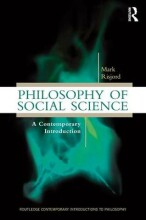Summary: Diversity 1
- This + 400k other summaries
- A unique study and practice tool
- Never study anything twice again
- Get the grades you hope for
- 100% sure, 100% understanding
Read the summary and the most important questions on Diversity 1
-
1 Week 1
-
1.1 Healy - the other side of belonging
This is a preview. There are 5 more flashcards available for chapter 1.1
Show more cards here -
What is meant with "the other side of belonging"?
People have a need to belong to something. The otherside is afailure to belong and the resulting damage that might occur -
What are the two ways in which there can be failure to belong?
Not-belonging = the loss of a sense of belonging
Unbelonging = the removal of membership belonging -
What kind of special roles do schools play in the forming of belonging?
They shapenormative values andbeliefs and are often charged withtransmitting theseprinciples togenerations . Theycontribute to theidentity-forming bonds needed byindividuals , often throughcitizenship -
What is the view of Healy regarding people and stories?
People arestory-teller and constantly tellstories about who we are and how we got where we are. Wechange thestories when we respond to thefacility oflife . We see ourselves therefore as anintegral part of a system -
What are the two ways in which people can belong according to the political strand?
A personal centimate of place attachment and an official public-oriented formal structure of membership, for instance: citizenship -
How was the action of Colin Kaepernick in 2016 by feeling for the national anthem for BLM so powerful in terms of belonging?
It is a political protest, because national anthems is the most important way of belonging, to show that he could act as an individual. -
What are the three interpretations of this action of Kaepernick in terms of not-belonging?
1. Aperson may see itself asdeeply bonded to thepolity (respect for theUSA and the flag etc.), but see no sense inassociating withfellow citizens
2. The group may see theperson asbelonging , but thisperson sees itselftreated as if it doesn't, because thetreatment is different.
3. The group sees theperson not asbelonging , neither does theperson (whichstrengthens vice versa). -
What can enlarge the feeling of absence?
In some of thesituations , theperson isfine with thesituation . However, when they are ignored, there can be a 'tyranny of themajority ' -
What was thought to be enough to tackle unbelonging at schools?
Strong school ethos combined with some form of citizenship education or values programme -
What has changed over the years in political sense of belonging?
In a world of increasing movements, attempts by governments to manage this movement means that belonging is open to retraction, forcing some into unbelonging.
- Higher grades + faster learning
- Never study anything twice
- 100% sure, 100% understanding
Topics related to Summary: Diversity 1
-
Healy - the other side of belonging
-
Anthias - Moving beyond the Janus face of integration and diversity discourses: towards an intersectional framing
-
Wilthagen, Ton, Aarts, Emile & Valcke, Peggy (2018) A time for interdisciplinarity: an essay on the added value of collaboration for science, university and society. Tilburg University, Nov. 2018
-
Tracey, Sarah J. (2019) Qualitative Research Methods: Collecting evidence, crafting analyses, communicating impact. Hoboken NJ: Wiley and Sons
-
Refugee-led advocacy





























